Employee Cybersecurity Awareness Training Topics and Best Practices
No one’s immune from falling prey to the traps set by bad actors. This is why employees’ knowledge and constant vigilance are so important. Let’s take a look at employee cybersecurity awareness training topics and best practices.

The COVID-19 pandemic and the remote work model led to many cybercriminals targeting organizations and employees. Back then, a quarter of individuals reported receiving more phishing attempts than before. These criminals felt that employees would be more distracted and more relaxed about security while working from home.
With many employees using personal devices that aren't managed by their organization’s IT department, security gaps became more pronounced. In this new reality, it's more important than ever for employees to understand their organization's cybersecurity policy. They need to take their organization's data security seriously.
Unfortunately, things haven’t changed much in a post-pandemic world from a cyber threats standpoint.
With the ever-increasing number of cyberattacks, employees should no longer view cybersecurity as optional or think that it's someone else’s responsibility.
Now, what do I mean when I say that the number of cyberattacks is increasing?
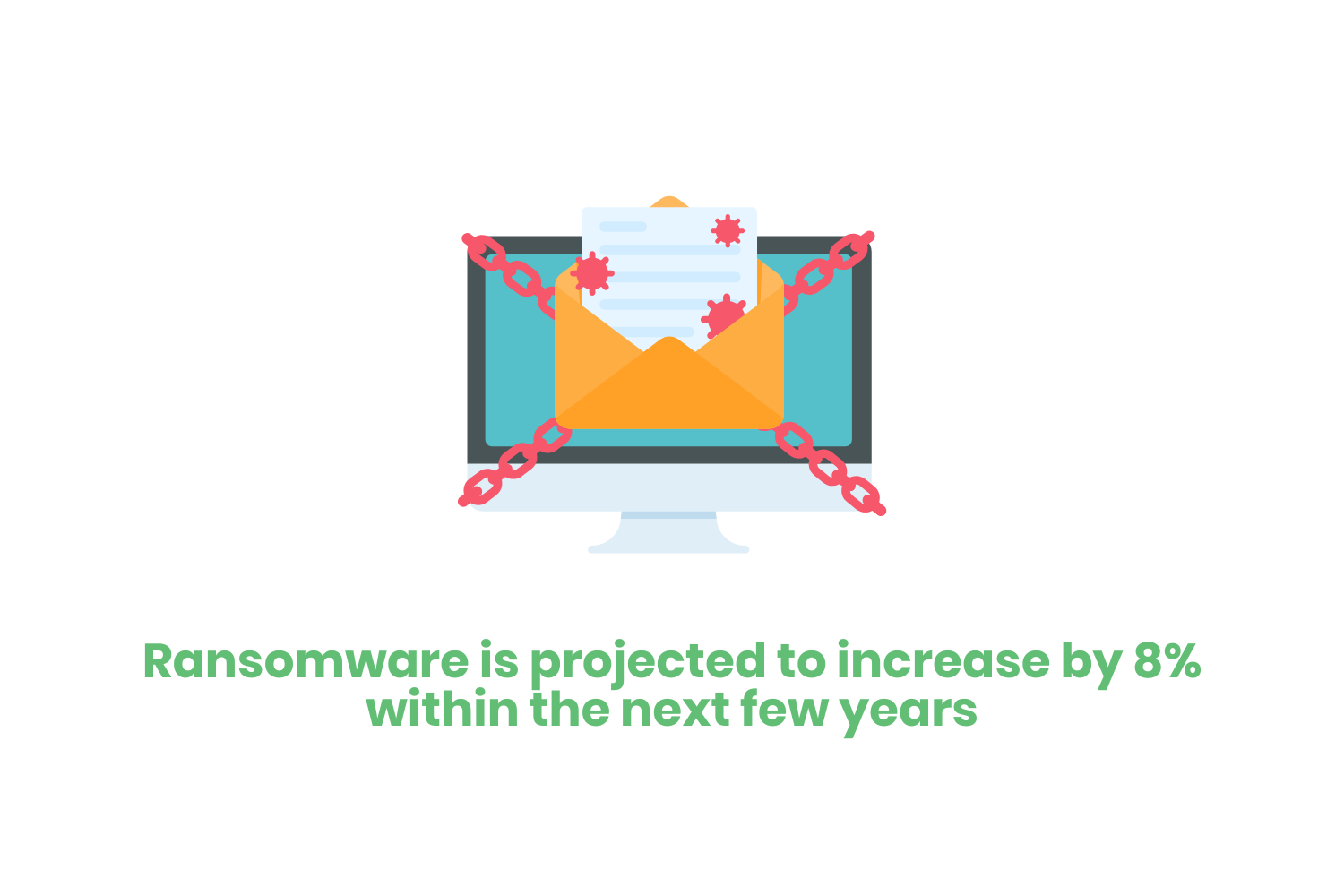
According to ThoughtLab, these are the hacking methods that are likely going to increase over the next few years…
- Phishing/social engineering: currently 46%, increasing to 50%
- Human error: currently 36%, increasing to 44%
- Ransomware: currently 32%, increasing to 40%
- Insider threat: currently 23%, increasing to 24%
Maintaining your organization’s data security, especially as people continue to work from home or in a hybrid environment, can seem daunting. One of the most important first steps you can take is to provide tailored cybersecurity training for all employees.
No one’s immune from falling prey to the traps set by bad actors. This is why employees’ knowledge and constant vigilance are so important.
Let’s take a look at employee cybersecurity awareness training topics and best practices.
Why is Cybersecurity Awareness Important?
According to the National Institute of Standards and Technology, organizations should assume that malicious parties will gain control of telework client devices. These bad actors will attempt to recover sensitive data from the company or leverage the devices to gain access to the enterprise network.
Some of the ways bad actors can gain access include:
- Device loss or theft
- Social engineering tactics
- Phishing
- Malware and ransomware
- Zero-day exploits
- Macro and script attacks
- Botnet attacks
- Neglecting to stay on top of OS patches, antivirus updates, and other critical upgrades
Training Best Practices
For minimizing the risk of a network breach, it’s necessary to bolster your first line of defense against external threats.
What’s this first line of defense? Training of course!
Here are six ways you can educate in-person and remote employees on best security practices.
Make Cybersecurity Clear to Your Employees
The first step to getting employees familiar with cybersecurity is to outline a clear message about what is happening in the company regarding cybersecurity. Such a message needs to be understandable, relatable, and diversified.
Avoid technical jargon that may confuse employees. This can cloud the message of any training, leading to more confusion. When possible, use simplified terms that are accessible to non-technical employees who may not be as familiar with the technology.
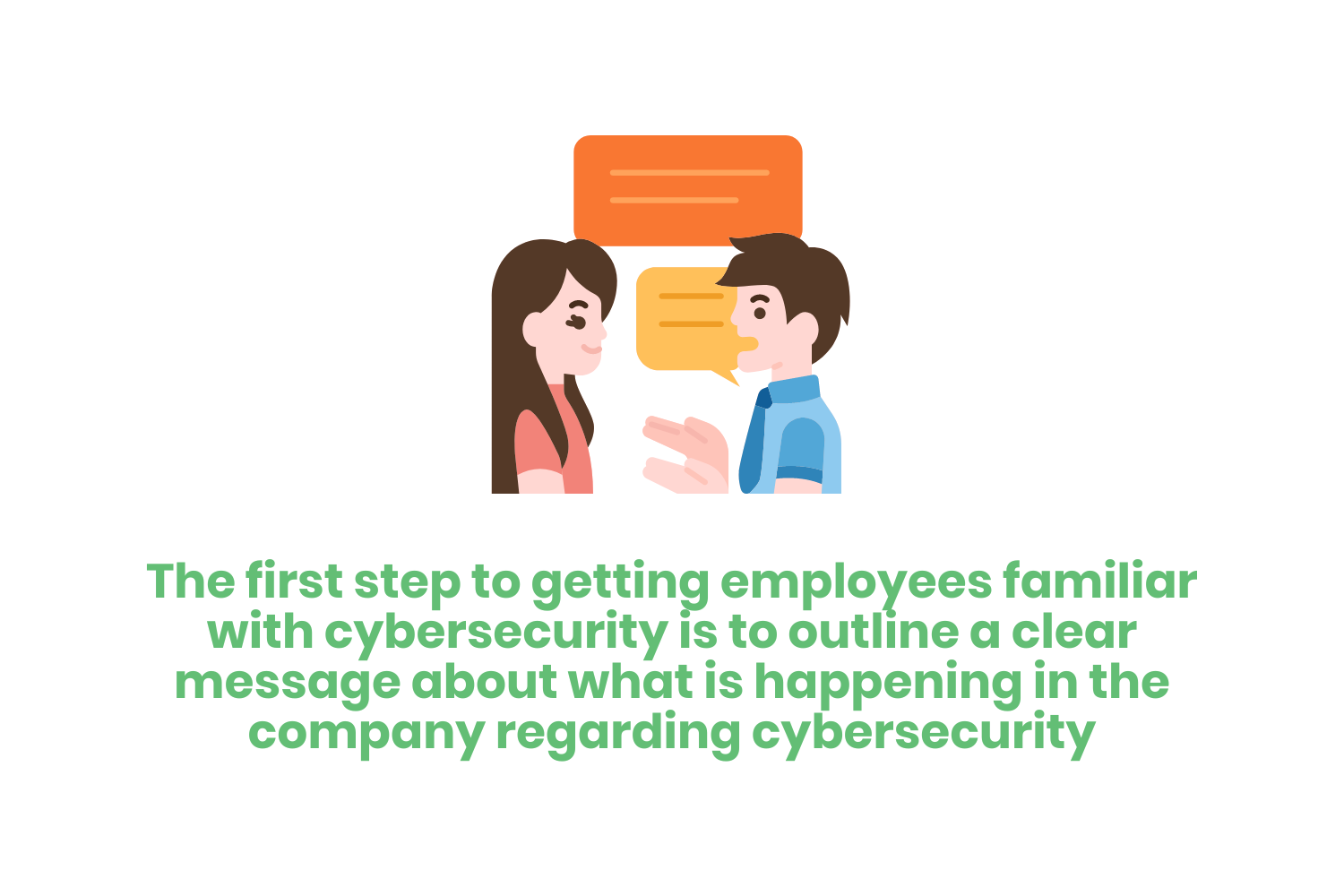
When talking about external threats, make the training less about the central network and more about personal computer safety and home network intrusion. This way, employees can personally relate to the danger if the training relates to their phone or laptop. In turn, this enables employees to have a personal stake in the security plan.
A simple email outlining all of your company’s cybersecurity practices may not be enough. Think about how many emails an individual employee receives. By diversifying your communications strategy, you can ensure that employees receive the message instead of dismissing it as just another announcement.
Encourage Taking Great Care of Your Devices
15% of company breaches happen because of lost or missing devices.
Whether it is a corporate or personal device, training employees about cybersecurity includes making employees aware that their gadgets act as a gateway to the organization's network. This enforces the idea that it is important to take care of such devices and use them properly, even in the confines of their own home.
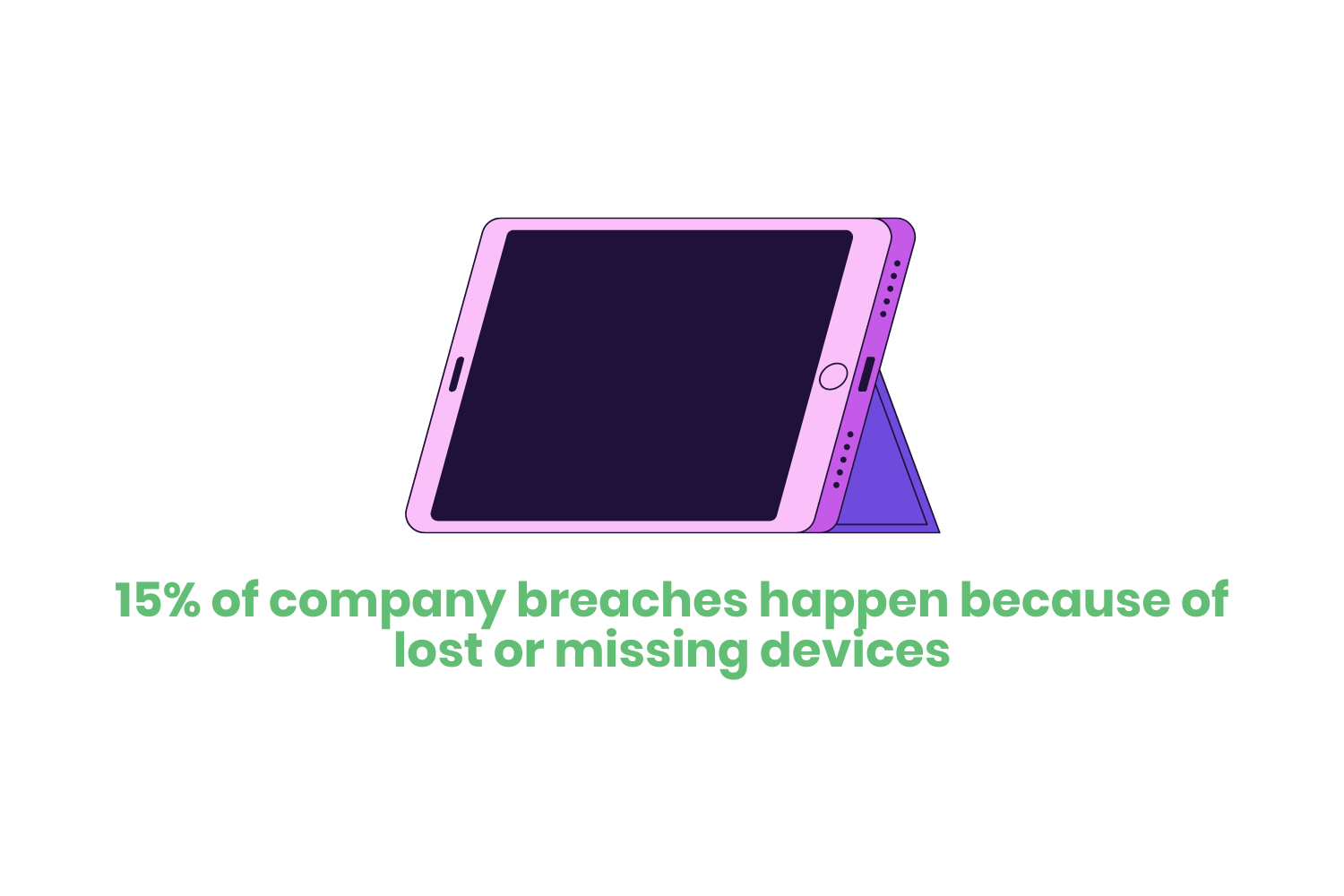
Help increase good device ownership by doing the following…
- Teach the difference between personal and corporate technology usage
- Make it mandatory to have a work account that is subject to…
- Motoring
- Restricted installations
- Web filtering
- Beware of old-fashioned loss and theft
- Make sure employees follow patches and OS updates
A device management and monitoring solution can help mitigate risk by automating push updates and tracking device status and physical location at all times. But, this should only serve as a backup. The end-user security best practices should rest with the employee.
Teach Employees How to Spot Suspicious Activity
Improve your employees' ability to spot suspicious activities by enhancing their cybersecurity awareness.
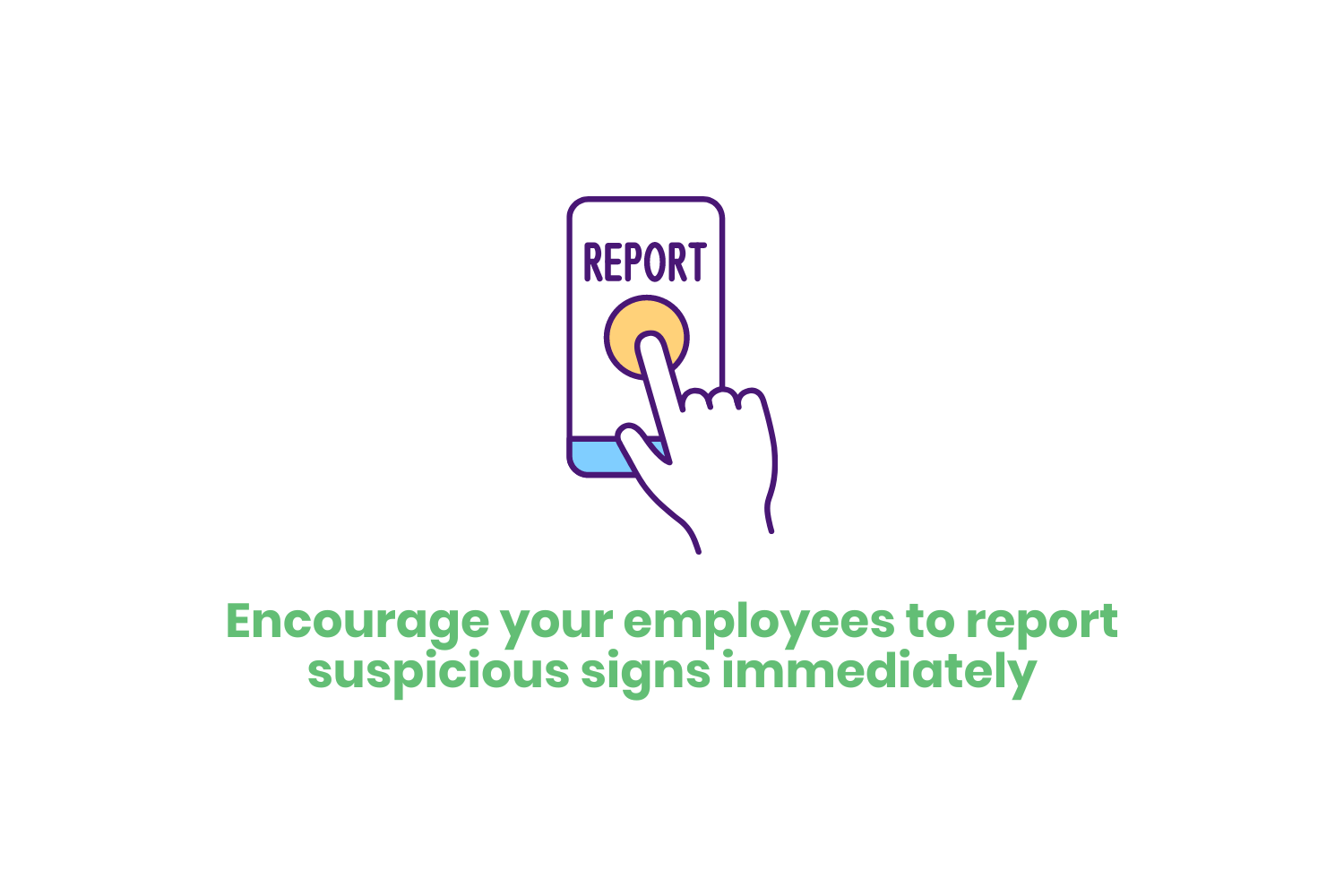
Teach employees to watch for the following signs:
- Sudden appearances of a new app or program on a device
- Strange pop-ups during startup, normal operation, or before shutdown
- The device’s speed slows down
- New extensions or tabs in the browser
- Loss of control of the mouse or keyboard
Encourage your employees to report suspicious signs immediately. Even if the incident turns out to be a false alarm, it might still be beneficial to the employee by clearing up errors in their device that hamper productivity.
Reinforce Confidentiality
Working from home tends to make people more complacent. This extends to cybersecurity.
Reinforce the importance of passwords and authentication even if an employee works in their PJs. Just because they’re relaxed doesn’t mean security has to be too.
To avoid cybersecurity threats regarding confidentiality, train your employees by conducting the following:
- Enact periodic and unique password changes
- Teach employees about the dangers of using universal passwords,
- Use real-world examples from past data breaches
- Discuss the rationale behind VPNs, multi-factor authentication, and other secure log-on processes
- Discuss why they are important despite being time-consuming
- To combat unsecured storage of company data, provide concrete examples of stolen data incidents caused by an errant thumb drive or compromised personal Dropbox account.
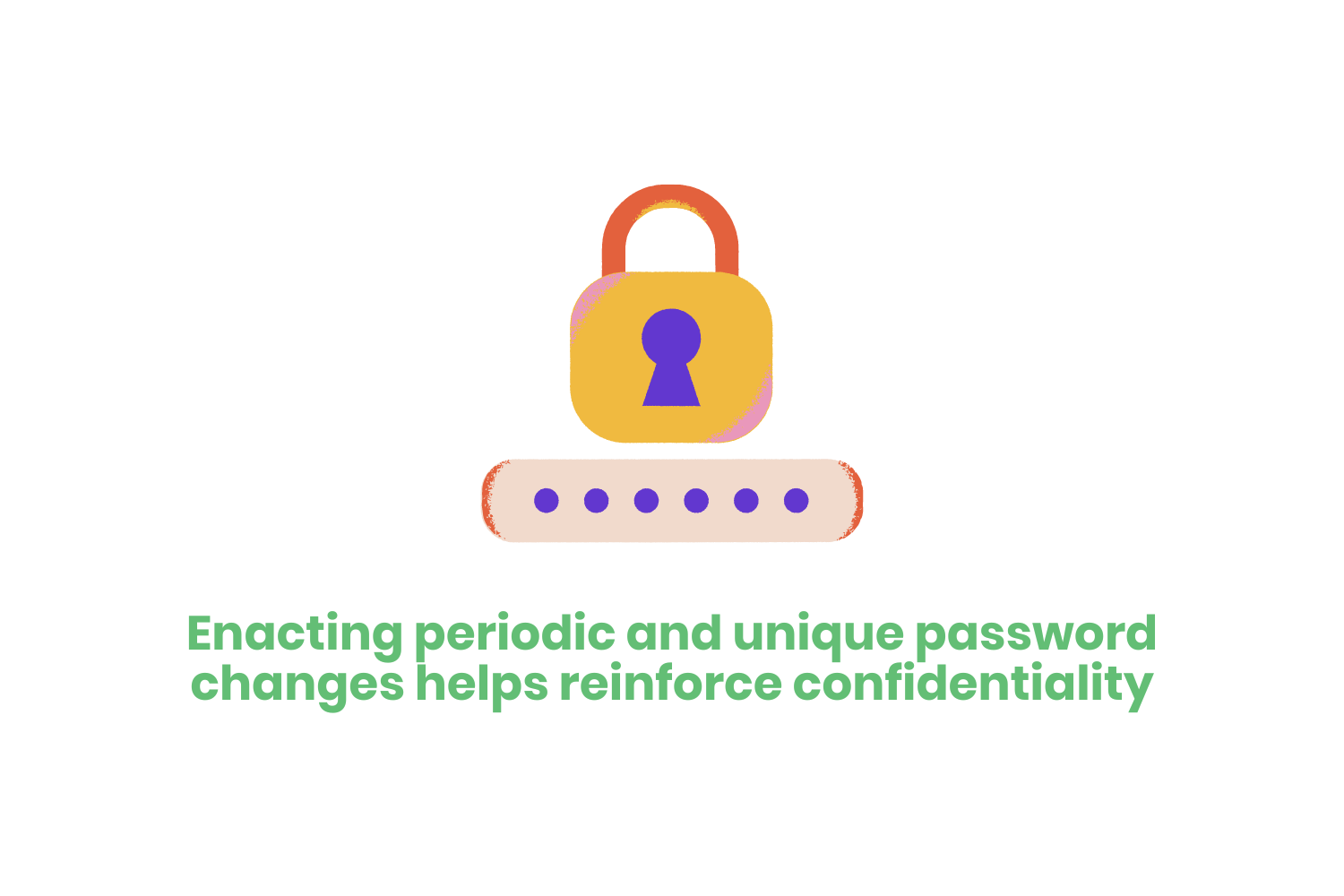
Examine Individual Cases of Cybersecurity Breaches
An office environment usually has a controlled network. However, your employees’ home computer security can vary widely. Some may connect through their home Wi-Fi, while others may use connections from the public Wi-Fi at a coffee shop.
Some employees may have older devices that are no longer supported by security patches, and it may be necessary to address those concerns by:
- Encouraging employees to use their company-provided devices
- If it’s BYOD, check the device brand and model year to see if there are outstanding exploits
- Do a security sweep of home networks
- For example, some older routers may have weaker WEP protocols instead of WPA-2, or some may even have the default password
- Pay attention to nomad employees and devise a security policy for them
- Roaming data or public Wi-Fi hotspots brings their own unique threats
Make Cybersecurity Awareness an Ongoing Conversation
On average, corporate employees spend up to 1/4 of their workday on email-related tasks. This makes a single email message about cybersecurity a poor choice, since they may not be able to appreciate the significance or absorb the information in one sitting.
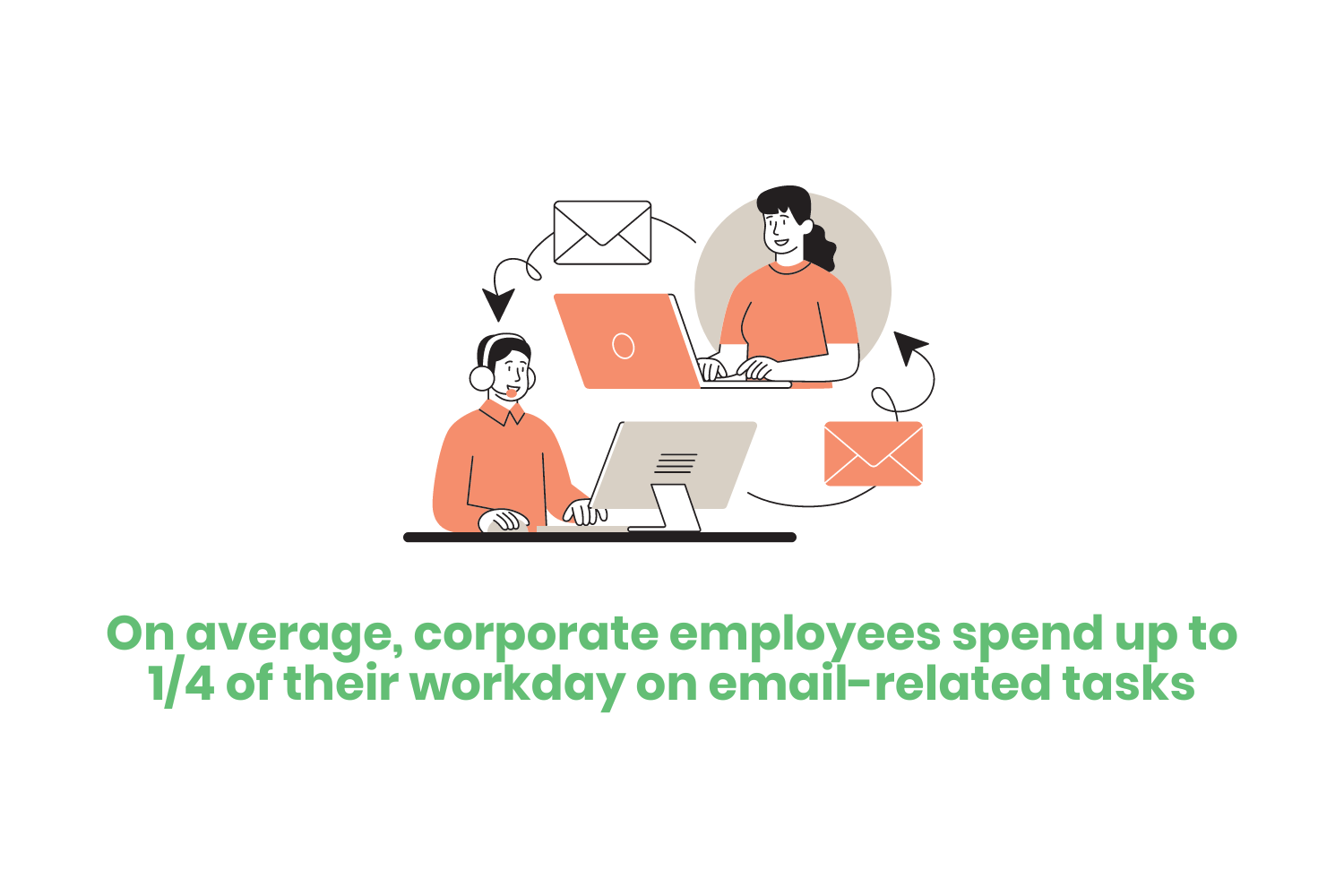
Here are some best practices to take with outlining a cybersecurity announcement to your employees:
- Use different approaches to cybersecurity education, such as regular announcements or newsletter updates.
- For each update, follow the KISS rule: Keep It Short and Simple.
- This way they can glean the message and retain the information amid their hectic day.
- Follow current trends. If there’s a new type of crypto-malware or exploit that crashes phones with a single message, make sure it reaches your members.
- Use eye-catching tactics each time to get them to absorb the message.
- Instead of listing dry statistics or do’s and don’ts, try colorful infographics.
- For long topics, try a video explanation.
- You can try cybersecurity tests to see if the lessons stick.
Topics to Cover
Regardless of an employee’s role in an organization, it is necessary to train everyone in cybersecurity awareness. It is a necessity if an organization is serious about shielding its sensitive data from cybercriminals.
You also need to think about the industry you work in. Some industries may fall under federal and state regulatory mandates that require annual cybersecurity awareness training for employees.

Data security is not just the responsibility of your company’s IT department. It is everyone’s responsibility. A well-trained group of employees is one of the best ways a company can protect sensitive data. Training can make the weakest link in an organization much stronger.
When building cybersecurity awareness training for employees, you must tailor the training for both technical and non-technical employees. Make sure that your training is relevant to everyone and anyone in the company.
It is also important that you tailor your training to the different generations in your company. For example, a Gen Z or Millennial employee may be much more tech-savvy than a Baby Boomer. This isn’t to say that the older employees are less intelligent. I’m just saying that younger generations are more accustomed to technology in their everyday lives.
Below are some topics you should consider covering as part of your cybersecurity awareness training for employees.
Passwords, Access Priviledges and Secure Network Connections
Many employees don’t understand the implications of weak and easily guessable passwords. They don’t realize how it can affect an organization’s security.
Additionally, employees might not know what someone means by “access privileges”. They may not understand the dangers of working on a non-secured network connection.
Some topics to include are…
- The difference between weak and strong passwords
- Best practices for password security
- What access privileges mean and their importance
- The importance of secure network connections
Social Engineering and Phishing
Do you know what social engineering is and how it relates to phishing attacks? Do you know why everyone is susceptible to this form of attack?
Many employees might not.
These forms of attacks seem to come from a trusted source. Therefore, they are generally successful if employees don’t recognize them for what they are.
Some topics to include are…
- How to recognize all forms of phishing scams and counter them
- How to recognize fake/suspicious web pages and software
- Identify the risks of social engineering
- How to recognize and counter social engineering tactics
Security for Devices
Many employees are simply not aware of the increased vulnerability created by using their own devices to access sensitive company data to complete job tasks. Some may mistakenly view their personal devices as more secure because the devices are in the employee’s home.
Employees need to understand why their personal devices are particularly vulnerable to cybercriminal attacks.
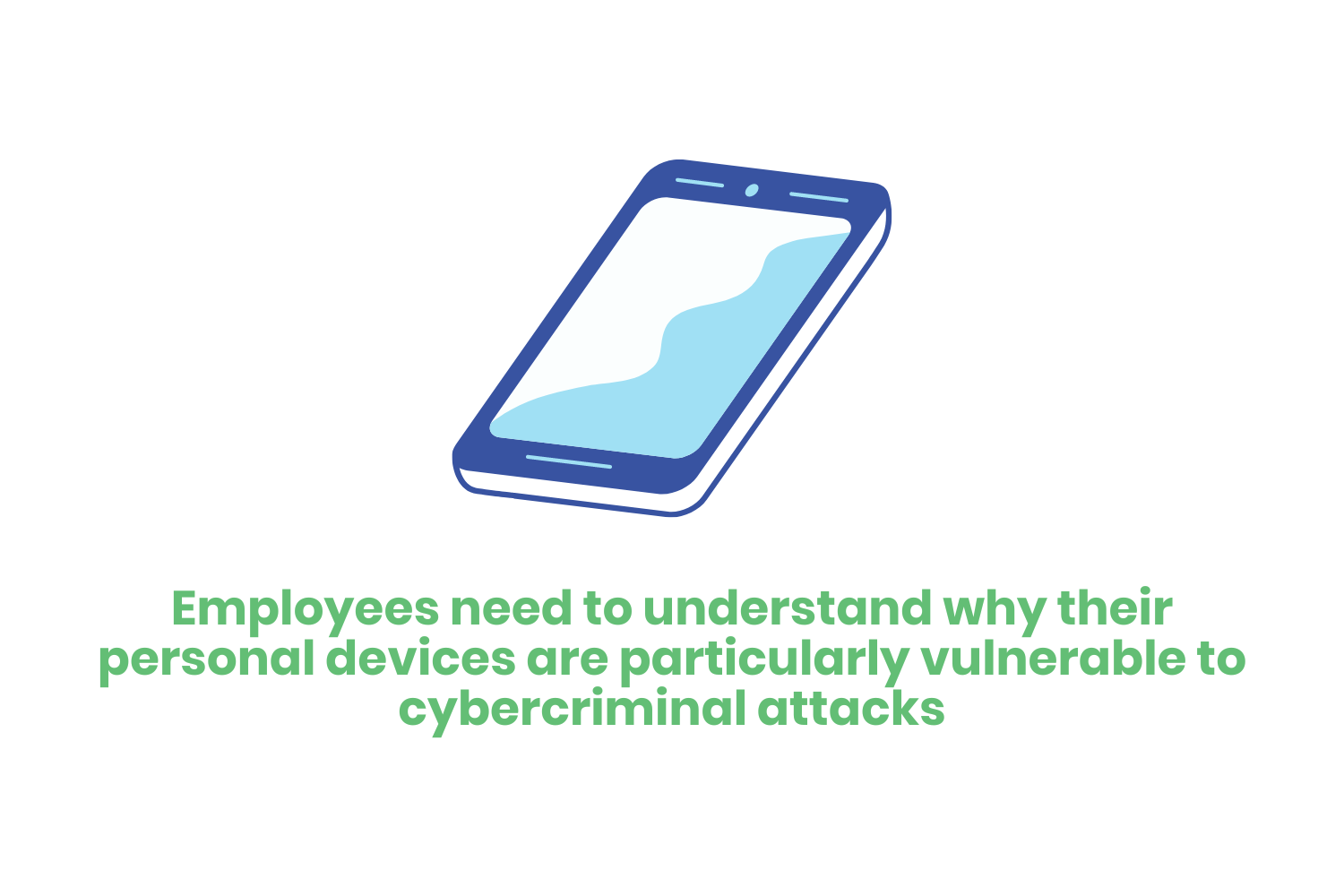
Some topics to include are…
- Introduction to mobile and computer device security
- How to use mobile devices properly and safely for work
- Recognize the risks posed by non-secure, unattended personal devices
- The importance of physical security of devices and device security updates
- Recognize the risks posed by unattended devices and sensitive documents
- Best practices for storing and disposing of paper documents
Cybersecurity Threat Reaction
This category of training is particularly important to IT staff since they are in charge of an organization's cybersecurity. They need to learn how to properly react to a cyber threat or breach.

Having an established plan of action in the event of a cybersecurity threat or breach will allow your company to act immediately. You can contain the damage and protect sensitive data that much faster.
Some topics to include are…
- How to assemble a threat reaction team
- Investigating and determining the source of the attack
- How to contain the damage and prevent further incursions
- How to assess the severity of the breach
- How to properly notify affected employees
Conclusion
It’s important that your organization’s internal cybersecurity awareness training includes the latest and most relevant security knowledge.
Non-technical employees are just as responsible for your organization’s cybersecurity as your IT security staff. Non-technical employees can no longer assume that their IT department is solely responsible for their organization’s cybersecurity.
If you do not currently have cybersecurity awareness training in place, we can help! Our K2 Academy cybersecurity training courses are for anyone, regardless of their computer experience. Our training can provide a baseline for cybersecurity knowledge your employees need to better protect your organization from cybercriminals.
If this sounds good to you, click here.
Emphasize your product's unique features or benefits to differentiate it from competitors
In nec dictum adipiscing pharetra enim etiam scelerisque dolor purus ipsum egestas cursus vulputate arcu egestas ut eu sed mollis consectetur mattis pharetra curabitur et maecenas in mattis fames consectetur ipsum quis risus mauris aliquam ornare nisl purus at ipsum nulla accumsan consectetur vestibulum suspendisse aliquam condimentum scelerisque lacinia pellentesque vestibulum condimentum turpis ligula pharetra dictum sapien facilisis sapien at sagittis et cursus congue.
- Pharetra curabitur et maecenas in mattis fames consectetur ipsum quis risus.
- Justo urna nisi auctor consequat consectetur dolor lectus blandit.
- Eget egestas volutpat lacinia vestibulum vitae mattis hendrerit.
- Ornare elit odio tellus orci bibendum dictum id sem congue enim amet diam.
Incorporate statistics or specific numbers to highlight the effectiveness or popularity of your offering
Convallis pellentesque ullamcorper sapien sed tristique fermentum proin amet quam tincidunt feugiat vitae neque quisque odio ut pellentesque ac mauris eget lectus. Pretium arcu turpis lacus sapien sit at eu sapien duis magna nunc nibh nam non ut nibh ultrices ultrices elementum egestas enim nisl sed cursus pellentesque sit dignissim enim euismod sit et convallis sed pelis viverra quam at nisl sit pharetra enim nisl nec vestibulum posuere in volutpat sed blandit neque risus.

Use time-sensitive language to encourage immediate action, such as "Limited Time Offer
Feugiat vitae neque quisque odio ut pellentesque ac mauris eget lectus. Pretium arcu turpis lacus sapien sit at eu sapien duis magna nunc nibh nam non ut nibh ultrices ultrices elementum egestas enim nisl sed cursus pellentesque sit dignissim enim euismod sit et convallis sed pelis viverra quam at nisl sit pharetra enim nisl nec vestibulum posuere in volutpat sed blandit neque risus.
- Pharetra curabitur et maecenas in mattis fames consectetur ipsum quis risus.
- Justo urna nisi auctor consequat consectetur dolor lectus blandit.
- Eget egestas volutpat lacinia vestibulum vitae mattis hendrerit.
- Ornare elit odio tellus orci bibendum dictum id sem congue enim amet diam.
Address customer pain points directly by showing how your product solves their problems
Feugiat vitae neque quisque odio ut pellentesque ac mauris eget lectus. Pretium arcu turpis lacus sapien sit at eu sapien duis magna nunc nibh nam non ut nibh ultrices ultrices elementum egestas enim nisl sed cursus pellentesque sit dignissim enim euismod sit et convallis sed pelis viverra quam at nisl sit pharetra enim nisl nec vestibulum posuere in volutpat sed blandit neque risus.
Vel etiam vel amet aenean eget in habitasse nunc duis tellus sem turpis risus aliquam ac volutpat tellus eu faucibus ullamcorper.
Tailor titles to your ideal customer segment using phrases like "Designed for Busy Professionals
Sed pretium id nibh id sit felis vitae volutpat volutpat adipiscing at sodales neque lectus mi phasellus commodo at elit suspendisse ornare faucibus lectus purus viverra in nec aliquet commodo et sed sed nisi tempor mi pellentesque arcu viverra pretium duis enim vulputate dignissim etiam ultrices vitae neque urna proin nibh diam turpis augue lacus.


![[ANSWERED] Is Zelle HIPAA Compliant?](https://cdn.prod.website-files.com/67e2b8210878abcba6f91ae6/68ad098bff78a96fcbd12339_IsZelleHIPAACompliant_224.webp)
![[ANSWERED] Do HIPAA Laws Apply to Employers?](https://cdn.prod.website-files.com/67e2b8210878abcba6f91ae6/68acfaf1f65a5c2c5d2c3a21_DoHIPAALawsExamples_1123.webp)
